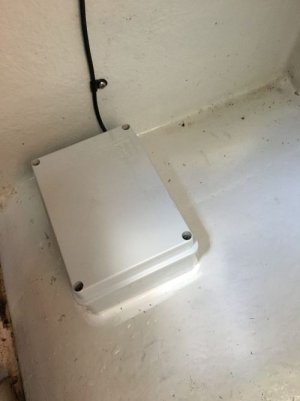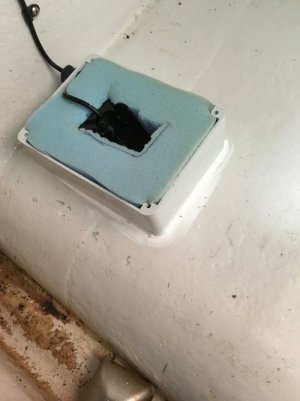onesea
Well-known member
We have new transducer to go into the boat. Annoyingly it doesn't work through the flat area on hull (internal ballast).
So I am left with a just fit area forward of the ballast, I am VERY limited on space.
Today I slowed water flow through the scuppers and filled the area with water, it worked until the water leaked away.
However there is very space to make a cofferdam and put a cap on to hold any mineral oil in place. There maybe ways but that’s a project for another day. As it is to fit the transducer needs to tilt about 5 deg forward to fit.
I am going to try the simple approach first - Silicone sealant.
As the hull is V shaped in this area, so the silicone will be an inch or so in the middle, whilst being zero at the edges.
Any suggestions for the best way to achieve this. Any particular sealant? Any other technique’s?
So I am left with a just fit area forward of the ballast, I am VERY limited on space.
Today I slowed water flow through the scuppers and filled the area with water, it worked until the water leaked away.
However there is very space to make a cofferdam and put a cap on to hold any mineral oil in place. There maybe ways but that’s a project for another day. As it is to fit the transducer needs to tilt about 5 deg forward to fit.
I am going to try the simple approach first - Silicone sealant.
As the hull is V shaped in this area, so the silicone will be an inch or so in the middle, whilst being zero at the edges.
Any suggestions for the best way to achieve this. Any particular sealant? Any other technique’s?


